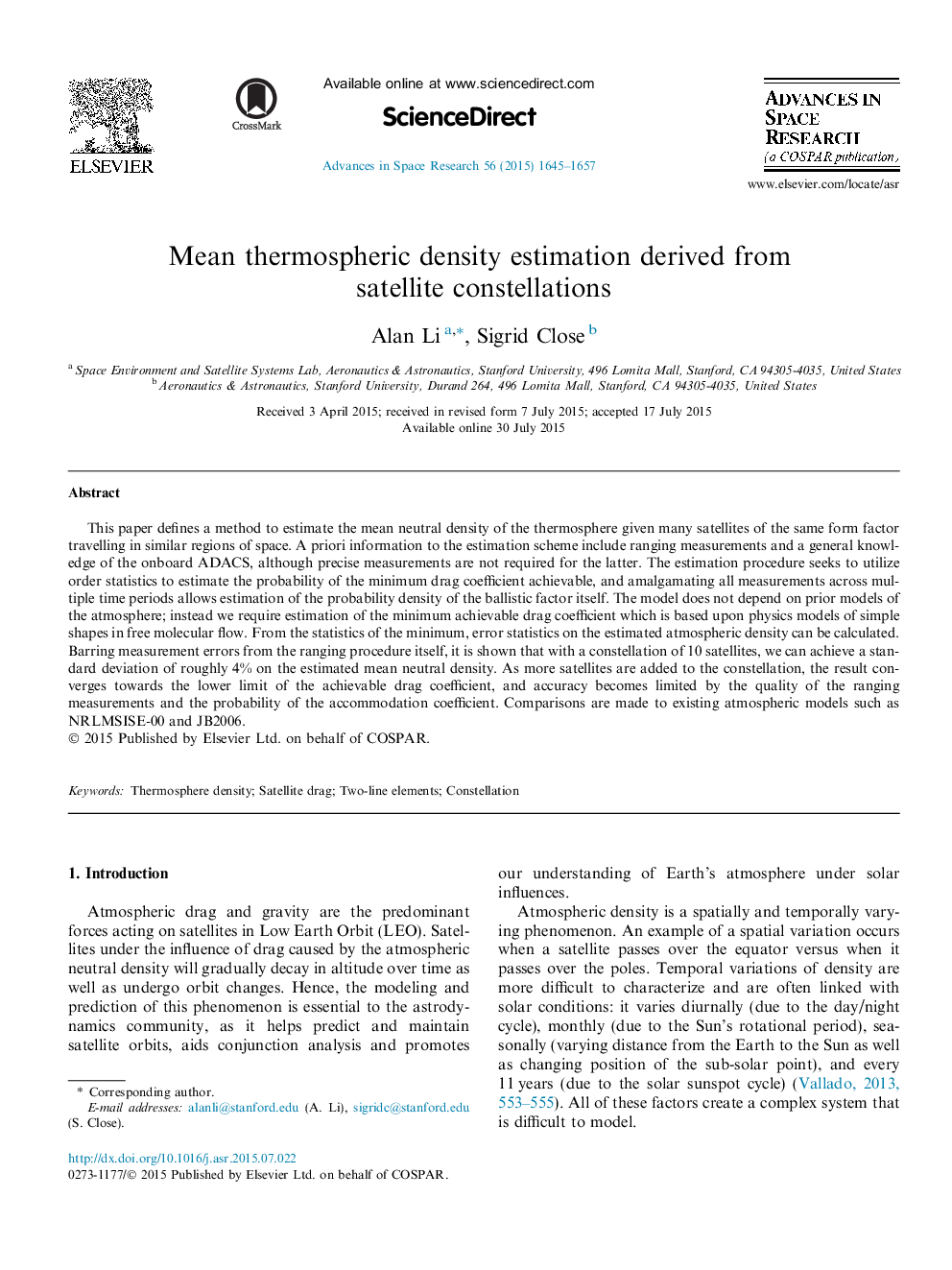| Article ID | Journal | Published Year | Pages | File Type |
|---|---|---|---|---|
| 1763448 | Advances in Space Research | 2015 | 13 Pages |
This paper defines a method to estimate the mean neutral density of the thermosphere given many satellites of the same form factor travelling in similar regions of space. A priori information to the estimation scheme include ranging measurements and a general knowledge of the onboard ADACS, although precise measurements are not required for the latter. The estimation procedure seeks to utilize order statistics to estimate the probability of the minimum drag coefficient achievable, and amalgamating all measurements across multiple time periods allows estimation of the probability density of the ballistic factor itself. The model does not depend on prior models of the atmosphere; instead we require estimation of the minimum achievable drag coefficient which is based upon physics models of simple shapes in free molecular flow. From the statistics of the minimum, error statistics on the estimated atmospheric density can be calculated. Barring measurement errors from the ranging procedure itself, it is shown that with a constellation of 10 satellites, we can achieve a standard deviation of roughly 4% on the estimated mean neutral density. As more satellites are added to the constellation, the result converges towards the lower limit of the achievable drag coefficient, and accuracy becomes limited by the quality of the ranging measurements and the probability of the accommodation coefficient. Comparisons are made to existing atmospheric models such as NRLMSISE-00 and JB2006.
